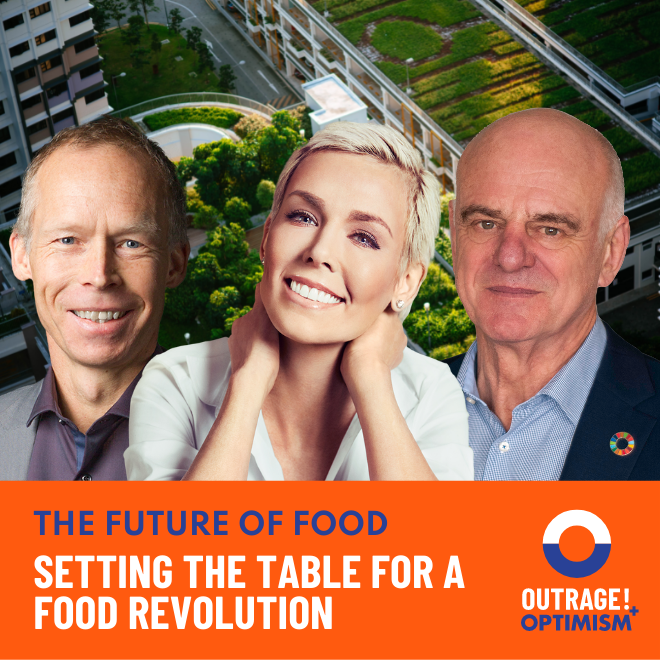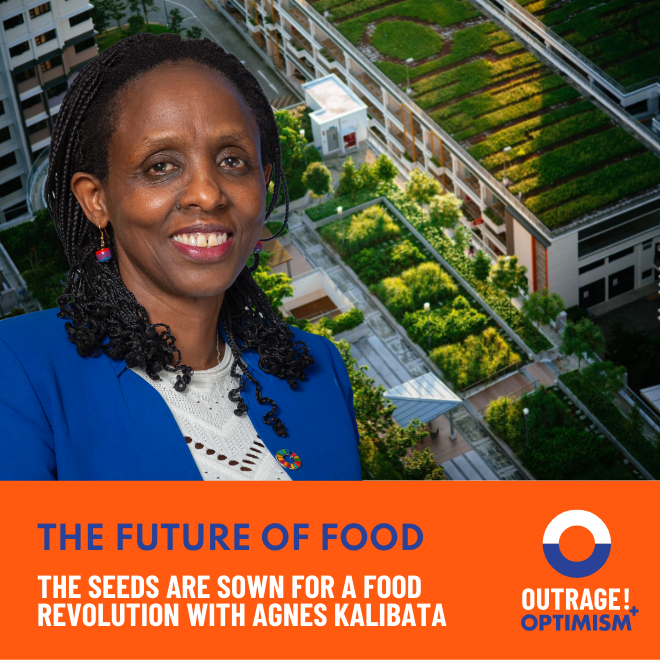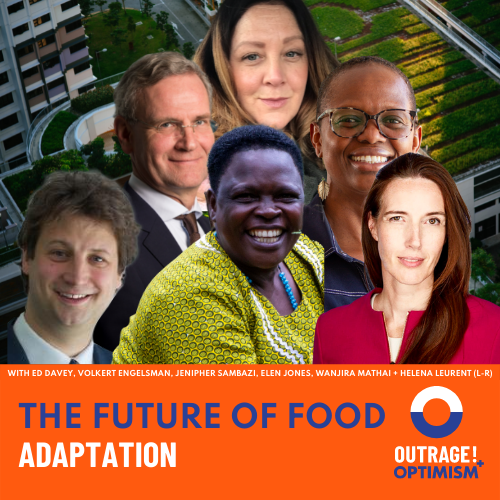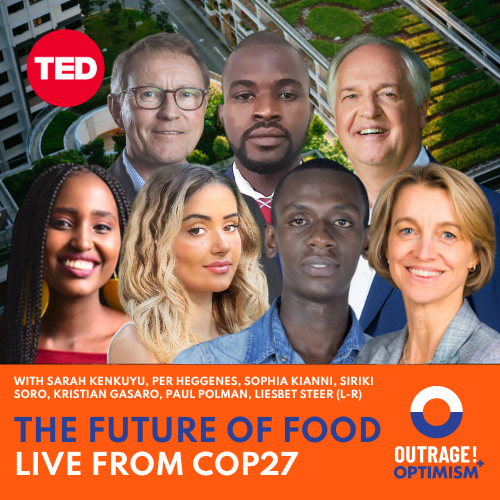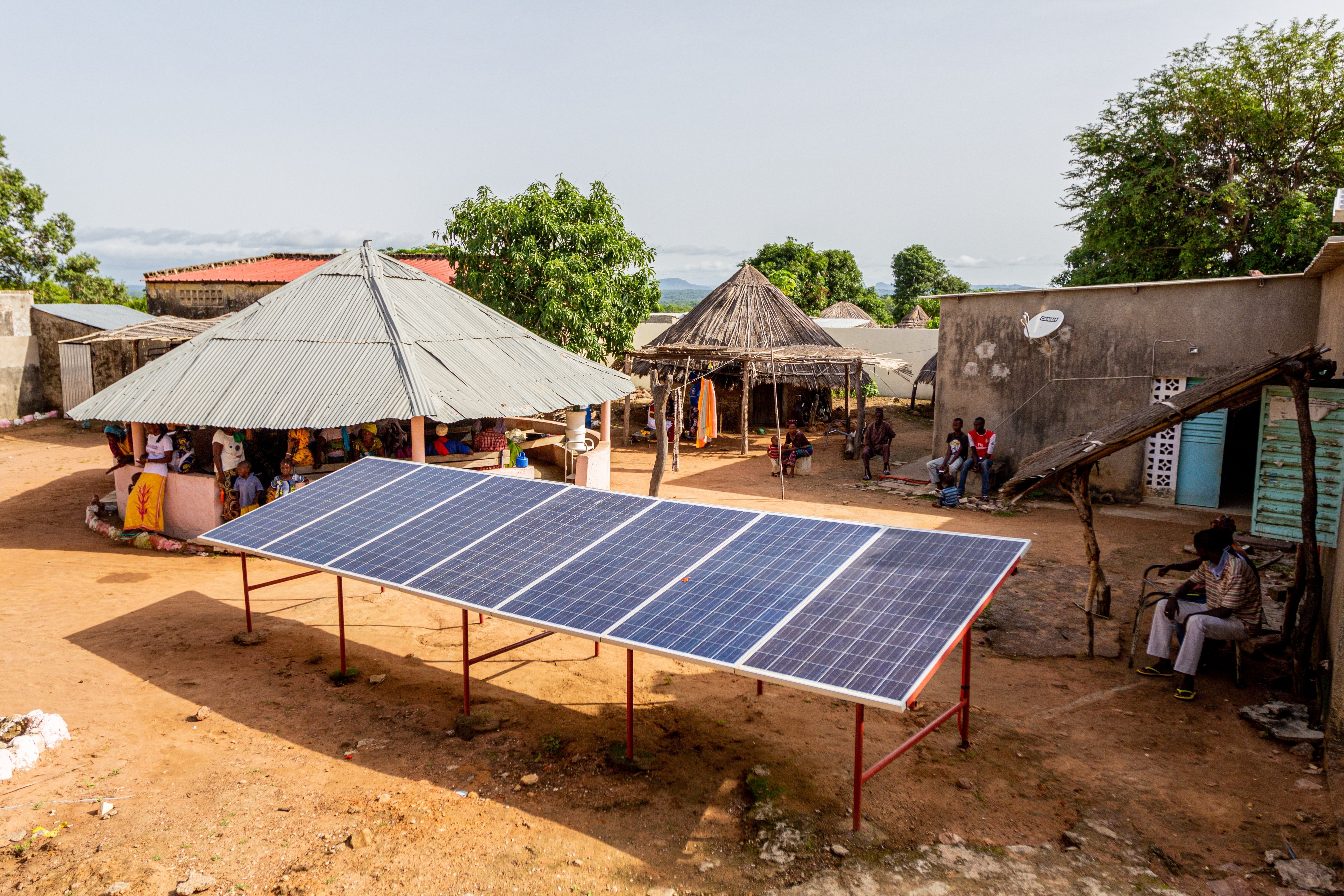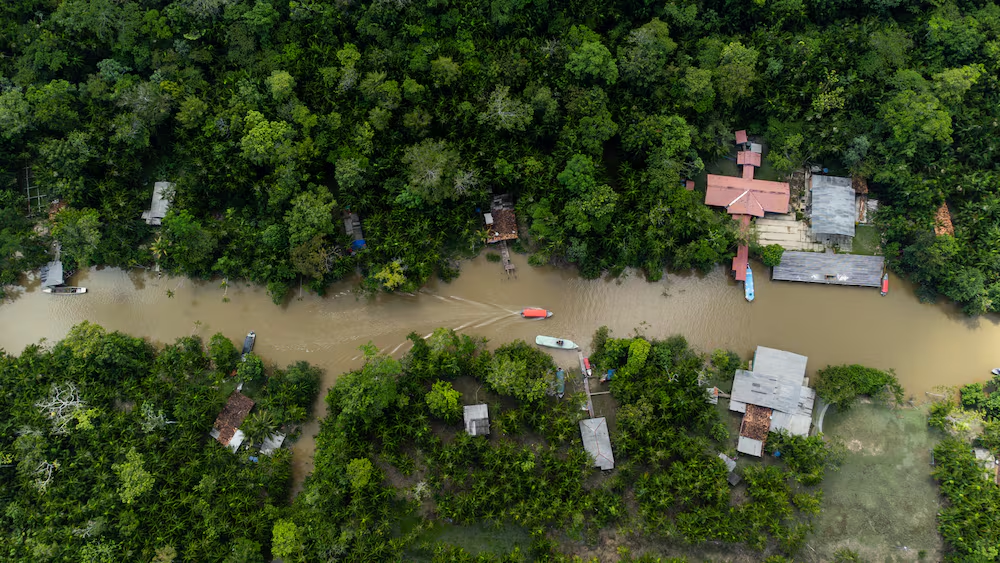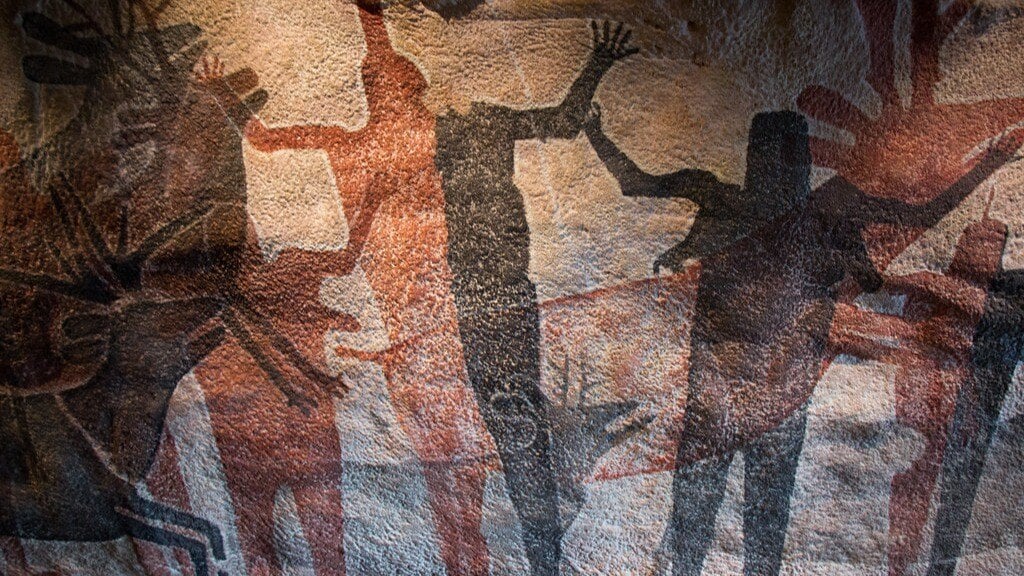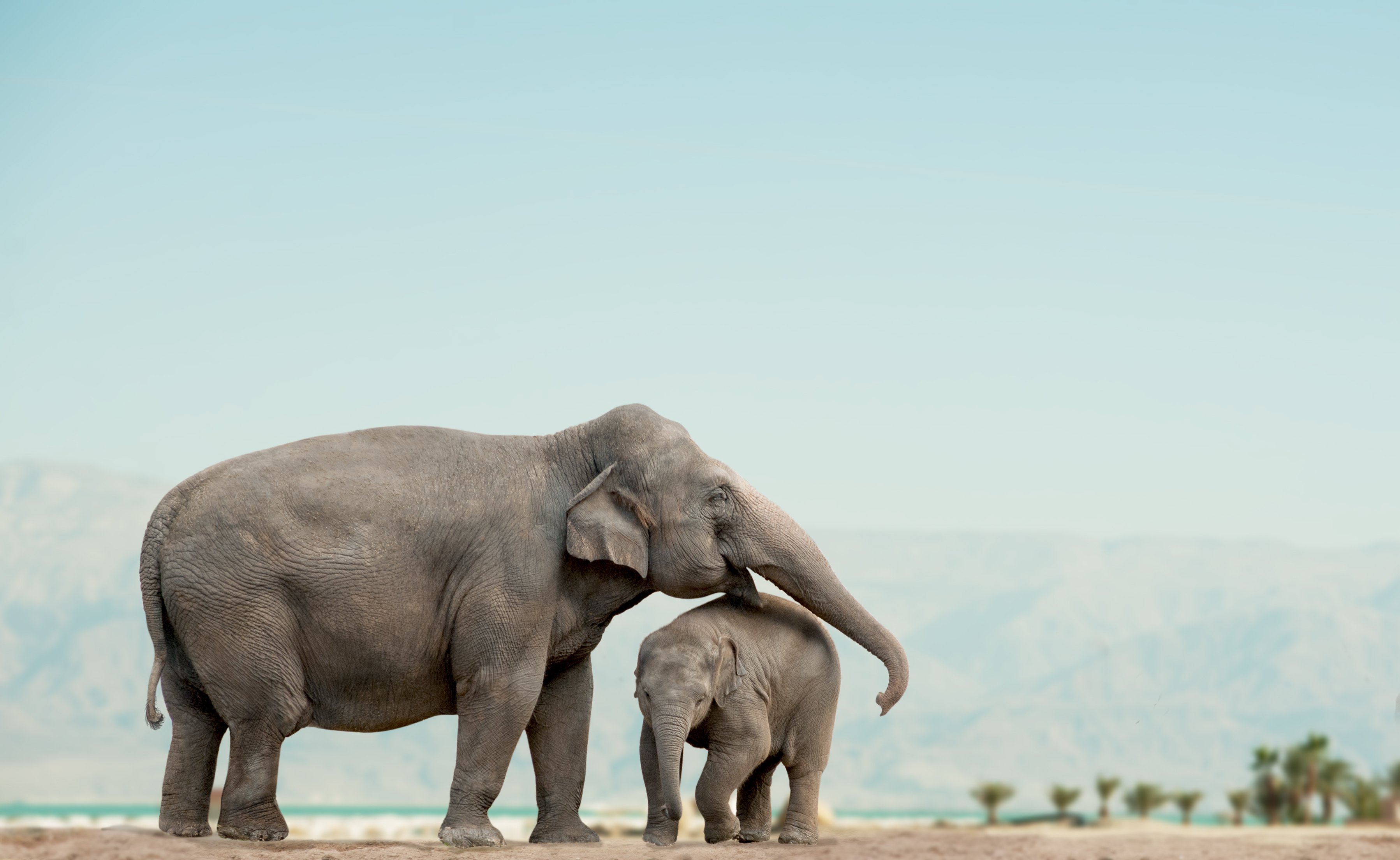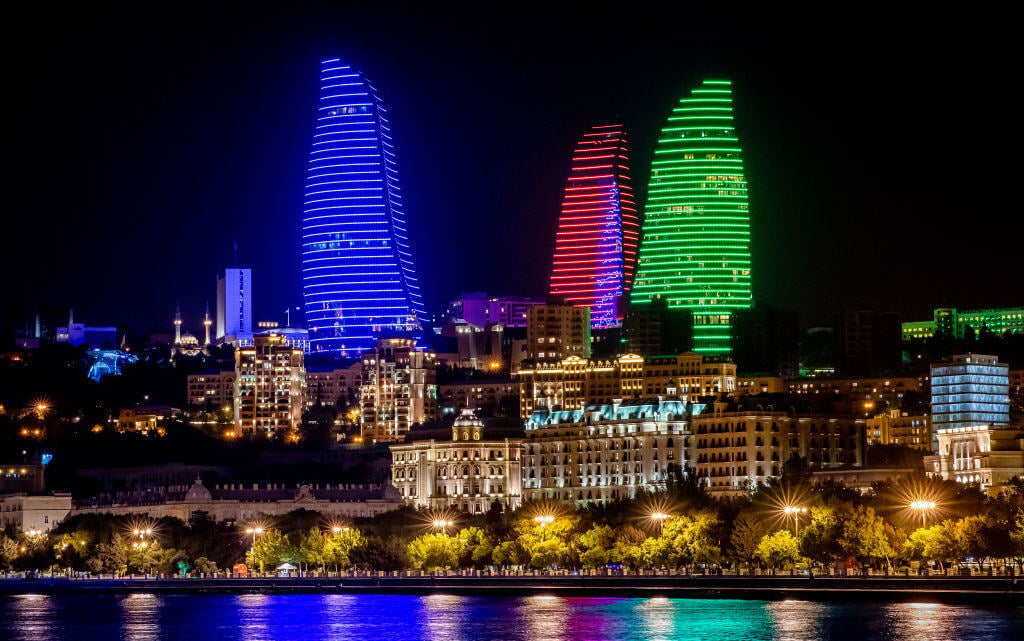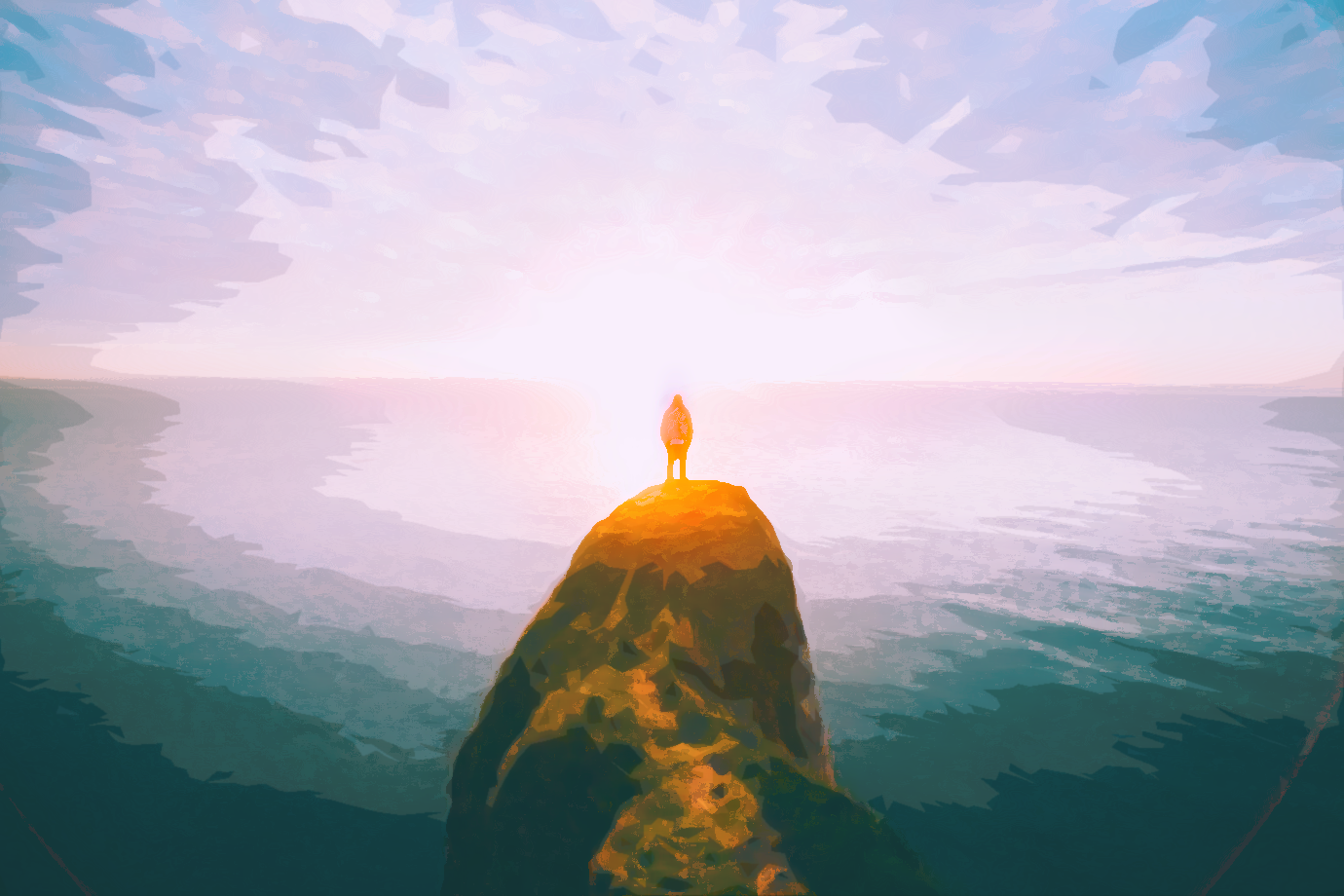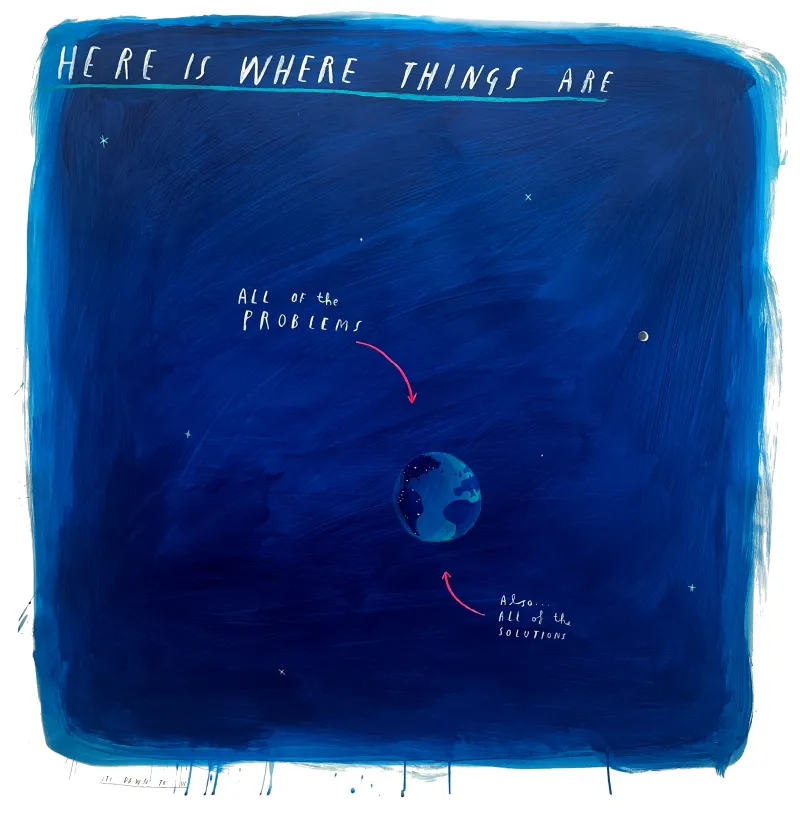159: How to Feed the World without Devouring the Planet
Regenesis: Feeding the World without Devouring the Planet is the title of George Monbiot’s new book and an essential challenge that we explore in this Future of Food episode, with the help of George and three other guests committed to transforming our food system.
About this episode
As the current global food crisis continues to push more and more people to the brink of starvation, join us as we take a deep dive into the root causes of the crisis. Surface with a diverse and exciting range of solutions that could ensure we have a ‘glocal’ diverse food system, and a paradigm shift in the way we produce protein that regenerates our planet and feeds our population.
Our four contributors to this episode are: George Monbiot, celebrated author, activist and environmentalist; Dr Laura Pereira, Associate Professor at the Global Change Institute at the University of Witwatersrand in Johannesburg, South Africa and a researcher at the Stockholm Resilience Centre at Stockholm University in Sweden; Dr Ruchika Singh, Director of Sustainable Landscapes and Restoration at the WRI or World Resources Institute in India; and Josh Tetrick, Co-Founder and CEO of Eat Just Inc. You can find their short biographies and links to their work and media platforms below.
All of our guests were incredible, but a special acknowledgement goes to Ruchika who recorded her interview during the middle of a heat wave in India. It should bring home to us all how climate change is already severely affecting particular regions right now.
A huge thanks as ever to The Ikea Foundation for supporting us with the making of this episode. Please check out their wonderful work using the links below:
—
Christiana + Tom’s book ‘The Future We Choose’ is available now!
Subscribe to our Climate Action Newsletter!
—
Mentioned links from the episode:
George’s mentions:
Solar Foods the precision fermentation company mentioned by George Monbiot who are making food from thin air. Definitely one to watch!
The Land Institute - Perennial Crops - the initiative mentioned by George Monbiot
Tolhurst Organic - The Oxfordshire Farmer doing incredible things with soil mentioned by George Monbiot
Laura’s Mentions
Scaling Out, Scaling Up, Scaling Deep by Michelle Moore. You can read up to 100 articles per month for free on this site if you register.
Ruchika’s Mentions
The Land Accelerator | World Resources Institute
—
Thank you to our guests this week:
George Monbiot, Author, Environmentalist and Activist (photo credit Guy Reece)
George Monbiot is an author, Guardian columnist and environmental activist. His best-selling books include Feral: Rewilding the land, sea and human life, Heat: how to stop the planet burning, and Out of the Wreckage: a new politics for an age of crisis. George cowrote the concept album Breaking the Spell of Loneliness with musician Ewan McLennan, and has made a number of viral videos. One of them, adapted from his 2013 TED Talk, How Wolves Change Rivers, has been viewed on YouTube over 40m times. Another, on Natural Climate Solutions, that he co-presented with Greta Thunberg, has been watched over 60m times. George’s latest book, Regenesis: Feeding the World without Devouring the Planet, was published in May 2022.
Website | Twitter | YouTube | TikTok
Dr Laura Pereira, Associate Professor at the Global Change Institute at the University of Witwatersrand in Johannesburg, South Africa and a researcher at the Stockholm Resilience Centre at Stockholm University in Sweden
Pereira is a member of the Seeds of Good Anthropocenes project and leads two current projects, the first is a Formas funded project entitled “Seeding transformative futures for people and nature in Africa ” and the other is an H2020 project in collaboration with EAT called “Foodtrails”. She also works with Guillermo Ortuño Crespo on a small project to realise transformative scenarios for the high seas using the Nature Futures Framework.
Pereira co-ordinates the SRC’s module of the Bosch Stiftung Transformational Leadership Post-doc Academy. She is also actively involved in MSc student supervision and gives a lecture on sustainability transformations as part of the MSc course.
Pereira holds a DPhil in Geography and Environmental Science from the University of Oxford. She completed her BSc (Hons) majoring in Zoology, Ecology and Law at the University of the Witwatersrand and read for an MSc in Nature, Society and Environmental Policy at St Hilda’s College, Oxford.
Dr Ruchika Singh, Director - Sustainable Landscapes and Restoration, WRI India
Dr. Ruchika Singh leads the Sustainable Landscapes and Restoration programme in India. Till January 2019, Ruchika anchored the restoration opportunity assessments for the Landscape Restoration programme at WRI India. Ruchika brings over eighteen years of extensive experience of conducting evidence-based research, programme management, assessments and evaluations related to various aspects of forest, water, tenure, resource rights, landscape management and governance issues, taking into consideration social inclusion and gender, from an interdisciplinary lens.
Ruchika also contributes to Cities4Forests, an initiative focused on helping cities better conserve, manage, and restore inner forests (such as city trees and urban parks), nearby forests (such as green corridors and watersheds) and faraway forests (such as tropical and boreal forests). Ruchika works closely with Kochi (India) to help them maximize benefits from trees and forests for water, air quality, biodiversity, climate, livelihoods and more.
WRI India
LinkedIn | Twitter | Facebook | Instagram
Josh Tetrick, co-founder and CEO, Eat Just, Inc.
Josh Tetrick is CEO & co-founder of Eat Just, Inc., a food technology company with a mission to build a healthier, safer and more sustainable food system in our lifetimes. The company's expertise, from functionalizing plant proteins to culturing animal cells, is powered by a world-class team of scientists and chefs spanning more than a dozen research disciplines. Eat Just created America’s fastest-growing egg brand, which is made entirely of plants, and the world’s first-to-market meat made from animal cells instead of slaughtered livestock. Prior to founding Eat Just, Tetrick led a United Nations business initiative in Kenya and worked for both former President Clinton and Liberian President Ellen Johnson Sirleaf. As Fulbright Scholar, Tetrick taught schoolchildren in Nigeria and South Africa and is a graduate of Cornell University and the University of Michigan Law School. Tetrick has been named one of Fast Company’s “Most Creative People in Business,” Inc.’s “35 Under 35” and Fortune’s “40 Under 40.” Eat Just has been recognized as one of Fast Company’s “Most Innovative Companies,” Entrepreneur’s “100 Brilliant Companies,” CNBC’s “Disruptor 50” and a World Economic Forum Technology Pioneer.
GOOD Meat
Facebook | Twitter | LinkedIn | Instagram
JUST Egg
Facebook | Twitter | LinkedIn | Instagram
—
Our partners for the Future of Food series: The Ikea Foundation
Website | Facebook | LinkedIn | YouTube | Instagram |
—
Big thanks to the wonderful team at Airaphon who helped edit and mixed this show for us this week. Check them out:
Twitter | Instagram | LinkedIn | Website
—
Keep up with Christiana Figueres online
Tom Rivett-Carnac
Instagram | Twitter | LinkedIn
Paul Dickinson
—
Follow @OutrageOptimism on social media and send us a message!
Facebook | Twitter | Instagram | LinkedIn
Don't forget to hit SUBSCRIBE so you don't miss another episode of Outrage + Optimism!
Full Transcript
Transcript generated by AI. While we aim for accuracy, errors may still occur. Please refer to the episode’s audio for the definitive version
Paul: [00:00:12] Hello and welcome to Outrage + Optimism. I'm Paul Dickinson.
Christiana: [00:00:16] And I'm Christiana Figueres.
Paul: [00:00:18] Sadly, this week we have no Tom Rivett-Carnac. This week we are having a deep dive episode looking into the future of food. Thanks for being here. So, Christiana, what's going on?
Christiana: [00:00:32] Yes. So this week maybe because Tom is not here, we are doing our next episode in our series on the future of food we're going to be taking, as Paul has already mentioned, a deep dive into the current food crisis. That I'm sure everyone is aware of, the crisis that is currently playing out across all global regions, accelerated by Putin's invasion on Ukraine, but not started there. Rather, just accelerated and exacerbated. We will explore, with the help of four brilliant guest contributors, the reasons why we're facing such an acute crisis. We are going to try to answer a very key question. Is the food system crisis a crisis of economics or is it a crisis of production? Now, most importantly, we will also hear how we might use this moment of crisis as an opportunity for the food system transformation. That will not catch you by surprise. Since we are always in the market for opportunities to transform crises into situations that actually benefit humankind. So with a focus on agroecology, indigenous and perennial crops and focused policy and financial support. Can we build resilience by diversifying our food sources while maintaining yields and regenerating our soil? That is the crux of our conversation.
Paul: [00:02:09] Well, Christiana, what an interesting topic and actually a rather sobering and almost terrifying one. I was doing a little bit of research before the episode and do you know, the World Food Program is now saying that people suffering acute food insecurity is at 323 million. That's up a fourfold increase since 2017. When I think of something like the pandemic, where tragically, perhaps we lost 15 million people, the idea that there could be 20 times that number at risk from food insecurity. I'm starting to worry that we're kind of failing as a species somehow. It's really deep this, it's pretty profound. I mean, you know, is there something wrong with us? Did we not teach global responsibility in schools? Or is it that Gus Speth point about the fact that we've got this problem with greed, apathy and selfishness and we need a spiritual and cultural transformation? How did this happen? I got a sense looking at food in isolation is like looking at explosions in Ukraine in isolation. It's the kind of cause of the problem but there's a much bigger story behind it. All right?
Christiana: [00:03:21] Yeah, it's so inherent. Right? It's so inherent in the system that we have built up. Probably the way I think about it, Paul, is there's two factors to this. One is how can everyone get enough food? How do we produce and distribute? Because we can produce or we're not distributing. How can we get that? The other piece is our relationship to protein. Which is adjacent to the first but is not the same because we have been producing protein in the most abominably ineffective ways. We certainly can look into the future to see so many other options of protein production, that are much more effective in their use of land and their use of water. And of course, have much less negative impact on soils and on global emissions. Both of them actually need to be treated together.
Paul: [00:04:31] There's something about nations as being like castles and I suppose there's also poverty within and even starvation within rich nations. Okay, before we go to the interviews, I've invented an idea. I've got a new law. Christiana, how about this? That anyone who can afford to feed themselves for the next 1000 years has to give 20% of their wealth to people who can't feed themselves for the next 1000 days. What do you think?
Christiana: [00:04:56] Say that again. That sounds interesting. Say it again.
Paul: [00:04:58] Anyone who's got enough money to feed themselves for the next 1000 years has to give 20% of their wealth to people who cannot feed themselves in the next 1000 days.
Christiana: [00:05:09] I'm interested in how you read the numbers but the concept is a good one. So shall we see what our wonderful interviewees have to say about this?
Paul: [00:05:20] What the real experts have to say? Let's do exactly that. I'm looking forward to it. We've got a great lineup. So let's get into these interviews now. Now, as we've already discussed, addressing a crisis when you're in the middle of a crisis is difficult. But our next four guests are all determined to create space. Not only to really understand the root causes of the crisis we're dealing with in food but also shifting the way we think about our global food system. They're going to show how we have the solutions that, if implemented, could drive transformative change in our food system and make it more resilient to future economic, geopolitical and climate shocks. The first part in solving the food system crisis in the long term is to dig behind the current headlines and understand how this crisis has been building for the last few decades.
Load MoreGeorge Monbiot: [00:06:13] So there's no question that the invasion of Ukraine has massively exacerbated the issue or I suppose you could say it's exposed the issue. Actually, the crisis has been building now for several years and it's a really weird one on the face of it.
Paul: [00:06:29] That's George Monbiot, a celebrated author, environmentalist and activist. His most recent book, Regenisis, is an investigation into the current food system crisis and a celebration of the solutions that he believes can help us to address it.
George Monbiot: [00:06:43] There was an assumption which seemed to be well-grounded, that hunger was heading for extinction. There had been a pretty steady decline from the 1960s until 2014 in the levels of chronic hunger. This was going to be one of the world's great success stories. We were going to meet that sustainable development goal of eliminating hunger by 2030. It was going to be champagne, corks popping but then, weirdly, in 2015, the trend began to turn. What makes this weirder still was that turning at a rise in the number of people who are chronically hungry, which has continued ever since, coincided with a fall in global food prices. Between 2008 and 2014, prices had been high by recent standards. In 2014, the Global Food Price Index stood at 115 points. It then fell really sharply to 93 points in 2015 and stayed below 100 until 2021. But throughout that whole period, the number of hungry people was steadily, slowly but steadily rising. Then it shot up with the pandemic and it's going to shoot up a lot further as a result of the crisis in Ukraine. This defies everything that economists believe to be true about the world. Price goes down, yet more people go hungry.
Paul: [00:08:11] So what's going on?
George Monbiot: [00:08:13] What seems to be happening? The global food system looks very much like the global financial system in the approach to 2008. Like the financial system, it seems to be losing its resilience now. Global food, like global finance and indeed like almost all the things important to us, is a complex system. Like all complex systems, it will absorb stress up to a certain point and its self-regulatory properties will damp down that stress and maintain a state of equilibrium. If that stress becomes too great, those self-regulating properties turn against it and they amplify shocks through the system. This is very much what we saw in the approach to the 2008 financial crisis, where relatively small perturbations became very big perturbations. We saw great, sort of fluxes in equity values and the rest of it. Then suddenly Northern Rock went down and then Lehman Brothers went down. Now the really terrifying thing is the global food system looks very similar and for very similar reasons. Just like in the global financial system, the big food companies have become too big to fail. On one analysis, the four companies control 90% of the global grain trade. The same companies own a lot of the seed trade, the chemicals trade, the machinery trade, the packaging trade, the processing trade, the retailing trade. There's been this huge consolidation both horizontally and vertically and their behaviour has started to synchronize. At the same time, countries have polarised into super exporters and super importers. For the sort of major agricultural commodities such as maize, rice, wheat and soy, we really now depend for global imports and just four or five exporters for each of those commodities. Of which for at least a couple. Russia and Ukraine are crucial ones.
Paul: [00:10:19] How has the task of transporting food around the globe, beyond our current state of conflict, actually contributed to the precariousness of the food system?
George Monbiot: [00:10:30] So we're looking at a system which is innately fragile but it's made much worse by something that also happened in finance. Which is a shift from stocks to flows as we've moved towards frictionless trade, towards the sort of harmonization of global trading standards, the upgrading of ports and roads. Companies have said, oh well, we don't need to keep food stocks anymore. We can just keep the whole thing moving with a just-in-time delivery system and in good times, that works very well. But if something goes wrong, suddenly you've got a massive problem on your hand because the supply chain snaps and basically our food reserves are floating on the sea. That's what our stocks are now. A great deal of that food trade passes through pinch points such as the Turkish Straits in trouble at the moment. The Suez Canal, which was in trouble last year when that huge freighter got wedged across it. Gibraltar Straits, the rest of it, only a couple of those need to get snarled up and suddenly bang. Big problems. What happens in this system, which has lost its resilience, which is highly susceptible, I think to collapse, is that as that potential tipping point approaches, we see shocks being amplified very quickly through it.
George Monbiot: [00:11:56] So interruptions in the supply chain, which are very often exacerbated by local export bans and by financial speculation as well. Are scarcely felt by countries like ours, by the rich nations with strong currencies but in the poor nations with weak currencies who are at the end of the queue with a weak buying power. Those shocks are felt very suddenly. As a result, even when the global price is low, the local price can spike. That's what seems to have been causing hunger, the rising levels of chronic hunger around the world. We're seeing these price spikes caused by the transmission of shocks through the system, which basically looks like the flickering that precedes a tipping point. You know, the governments were able to bail out the banks because they could draw on future money for their bailout but you can't draw on future food to bail out the food system.
Laura Pereira: [00:12:54] We largely still see food system crises as a function of agricultural production. Meanwhile, most of us are actually largely dependent on buying our food. It's actually an economic crisis.
Paul: [00:13:08] That's Lara Pereira, associate professor at the Global Change Institute at the University of Witwatersrand in Johannesburg, South Africa. She also works as a researcher at the Stockholm Resilience Centre at Stockholm University in Sweden.
Laura Pereira: [00:13:25] I think at least in South Africa, which is largely where most of my work has been done recently, it was actually the COVID lockdown that spiked a really large realization on how fragile our food system is and how prone to hunger people actually are. How borderline, so many people who are sitting at the margins of income, of uncertainty in terms of where they're going to get their next payment in order to go and buy food. It's not about how much we can actually produce necessarily on our farms. Subsistence agriculture is super important. Household gardens equally are too but it's actually increasingly becoming an economic problem. You're seeing now a big discourse, rightly so, on the war in Ukraine, Russia hoarding wheat, being able to sell it on to two other countries for geopolitical influence. Food actually being seen as a political tool. We are going to see a lot of impacts in that area because we are dependent on trade when it comes to our sort of our main staple grains in particular.
Paul: [00:14:38] Lara makes an interesting point about the impact of the current price mechanism we use and how this contributes to the crisis.
Laura Pereira: [00:14:46] It's also interesting that you started to see price shocks even before we actually had an access problem, right? That also stems largely from speculation, right? In futures markets, there's increasingly a lot of work that's been sort of written on how you can hedge bets against this potential future loss and sort of start to drive prices up now already. It's that price mechanism that's actually the critical aspect that we're talking about when we're talking about a food price crisis now. It's less about just the mere availability and more about the fact that people just can't afford to buy the main basic staples. I think that that's the systemic problem that we're really having to fix. If you want a resilient system, it's not just about making sure that production is fine, which is an important aspect. Particularly in the climate, we know that's going to get increasingly hard to do, to actually meet needs. But we currently do produce enough food globally to feed everyone an adequate diet.
Ruchika Singh: [00:15:51] There is, of course, a history that we need to also think about when we talk about land use in the Indian context. For instance, there is a huge role with the IPCC's last report that came out actually recognized the colonial history that we also need to keep in mind when we think about the impact of climate change.
Paul: [00:16:10] That was Ruchika Singh, director of Sustainable Landscapes and Restoration at the WRI or World Resources Institute in India. Ruchika puts in context how the challenges India is now facing, can in part be seen as a result of the Green Revolution that was put in place to meet the food crisis in the sixties and seventies.
Ruchika Singh: [00:16:31] In the Indian context, of course, we've had the Green Revolution. Which was fantastic, which helped. Which was solving basically problems of a particular time in a way, right? We were dealing with the issues around food security and those issues were critical. We had to feed the population. In the current context, what we basically are facing is implications of that resource-intensive agriculture in India, which is causing agrarian distress. There is impact on soil health and agricultural biodiversity as well.
Paul: [00:17:06] So George, tell me what you think we need to do to bolster resilience in our food system to ensure it does what it's supposed to do and feed the growing global population.
George Monbiot: [00:17:17] What you need to do to make a system resilient is to restore some of its spare capacity, its redundancy, in other words, restore its modularity, which means its compartmentalization. So the shocks can't flow right through it. They get stopped and they can't amplify too far to restore its circuit breakers, again, with a similar effect and to create backup systems. Ways of producing the same thing but in completely different ways. How do we restore that resilience to the system? And at the same time, how do we do it without completely trashing another complex system or set of complex systems, which is our earth systems? Upon which we are also entirely dependent for our survival. I think there are lots of new ways of doing things, lots of ways of restoring that diversity and redundancy to the system which we so desperately need. While at the same time protecting our life support systems and the principle behind it. I mean, what we should aim for is food production, which is both low impact but high yield. How do we do that? I've been looking at what I think is some really exciting ways forward. One of them is a switch from annual grain growing to perennial grain growing. Almost all the grains we eat, whether they're cereals, whether they're beans and pulses, whether they're oilseeds, are produced by annual crops. Large areas dominated by them are very rare in nature and they generally occur as a result of an ecological catastrophe. To grow our annual crops, we have to create a catastrophe every year. We have to plow the land or spray the land and destroy all the perennial plants along the lasting ones with which they might compete.
George Monbiot: [00:19:18] We have to really pamper these annual crops and they're often extremely susceptible to environmental change. They need a lot of water. They can only survive within a certain temperature range. If we can switch to growing perennial grain crops, we can unlock all sorts of amazing advantages. One of them is that you don't have to plough the land every year because the same plants will keep producing a harvest year after year. Another is that you don't have to establish the plants every year. So in principle, at any rate, you'll need much less fertilizer, less herbicide, less pesticide, all the rest of it. They're likely to be far more climate-resilient. In Salina, Kansas, a group called the Land Institute has fulfilled a dream which has eluded scientists for the past 100 years. They have managed finally to produce a range of perennial grain crops and their first one has already been fully commercialized. Working with Yunnan University, they've produced a perennial rice variety which has now been harvested six times and still has the same yields as annual rice does. Farmers in Yunnan, are desperate for the seed because it not only greatly reduces soil erosion, which is a huge problem there but also greatly reduces the need for labour. Which is also a massive problem because the young people have moved to the cities. It ticks so many boxes. There's loads of reasons why this could be a transformative idea. At the same time, it diversifies the food system. You know, not everyone's going to immediately switch to perennial crops but you've got something different going on. We need to bring as many different things going on into the food system as we can.
Paul: [00:21:08] Now, that's really interesting, George but can you tell us what about our other sources of fresh food?
George Monbiot: [00:21:16] I've been looking at fruit and veg as well and following the extraordinary work of a grower called Ian Tolhurst or Tolley, who's actually based here in England. He's anticipated recent developments in soil ecology which show that fertility is as much a function of soil biology as it is of soil chemistry. Because plants get their minerals with the help of bacteria and fungi. In fact, they really struggle to get minerals without bacteria and fungi. They have a symbiotic relationship with them. What we're beginning to see is that if we can mediate that relationship between the plants and the microbes, you can greatly reduce or perhaps, as Tolly has done, eliminate the need for fertilizers and manure without any fertiliser or manure across 34 years. He's now raised his production levels to hit the lower bound of what conventional farmers, growers are producing on good land. It's quite extraordinary and what he's done is to just tweak that relationship between plants and microbes. Tolly's real breakthrough was the discovery that if he sprinkled a tiny amount of woodchip onto the green manures that he grows underneath and between his crops. That seemed to alter that carbon-nitrogen ratio sufficiently, suddenly to give him a massive yield boost without any fertiliser. I mean, the woodchip isn't a fertiliser, it's an inoculant which helps to stimulate the growth of bacteria and fungi. It is an astonishing achievement. He's now maintained those high production levels for 12 years having had rising fertility and production across the whole 34 years he's been there. He's sort of made this breakthrough about 12 years ago and lots of people are now trying to do what he's doing. It's a sign that actually these new developments in soil ecology, what Tolly did in practice years ago, we're just beginning to understand in theory. Could give us some major breakthroughs in the way that we grow crops.
Paul: [00:23:29] We are all agreed that we need to transform the food system. Isn't it a very difficult challenge to change a system that's been in place for decades with so many stakeholders, with conflicting viewpoints and in the middle of a crisis?
Laura Pereira: [00:23:46] It's something that we need to come to terms with. That transformation is hard. It's difficult getting away from our business as usual. The status quo is particularly for those of us who are privileged enough to actually have our basic needs being met. Why would we want to shift away? It's not something easy. It's also quite often very much at odds with meeting present needs. That chronic response to hunger right now, which is extremely necessary, doesn't necessarily allow us the space for a longer-term kind of visioning of what is the future system that we want to build. Because there's always going to be a moment of tension of disjuncture happening around there. So that's just something to bear in mind when we're having these conversations. That it's not easy. On the other side in terms of sort of practical solutions there tends to be a dichotomy of viewpoints. You know, it's like global trade is going to save us as long as we produce enough globally. We'll be able to be resilient against climate impacts on production in some areas. We'll be able to source things elsewhere. I think we really saw that trade was not always going to be the answer, particularly under the financial crisis. You saw trade barriers go up in countries, where riots were breaking out around sort of lack of access to food.
Paul: [00:25:06] Does trade still have a role to play? Shouldn't we be therefore trying to eat more locally?
Laura Pereira: [00:25:11] We need to look at how the trade regime can help because I think that global aspect is important. There are so many communities around the world who are reliant on exporting their products. Coming from a country where I can really appreciate avocados and mangoes and grapes and we have a really big citrus export market in South Africa. Having just come back from Latin America, where similarly, just all of these foods that the rest of the world really wants, you're not going to get rid of trade any time soon. I'm not going to give up my morning coffee either, even though that's not something that South Africa is producing en masse. That's an important aspect to take into account. Then the other side to that is we need to sort of go local, eat everything, you know, sort of within a ten-kilometer radius or at least within our country. Which is an important aspect of resilience because that is how you build resilience against shocks that are happening elsewhere. But not necessarily against shocks that are going to be happening within your local food system. That's where that need to be able to have access to food from elsewhere is important.
Paul: [00:26:16] Where have you seen the most compelling solutions that strengthen resilience?
Laura Pereira: [00:26:21] The main solution space that I've been working in is not being those global versus local debate. It's been around diversification. Around how we actually need options. We need to increase the types of foods that we're actually eating. This is because it's not just from a production perspective, in terms of if you're only growing wheat and that gets knocked out, you're going to have a problem. So there's both a resilience from that perspective but the way that we grow our food also needs to be diversified. The kinds of species that we're having, I think everyone is pretty familiar at this point that we're extremely reliant. I think it's sitting over 70 or 80% of our food is actually coming from rice, wheat and maize and now increasingly soybean too. Reliance on 3 to 4 crops is clearly not the most resilient of strategies at the planetary level. Then there's dietary diversity and for me, this is a really important component because largely the discourse, particularly around development was originally around meeting basic calorie needs, right? You can meet basic calorie needs just from literally giving someone a bowl of rice for meals every single day. Yes, you're going to meet your calories.
Laura Pereira: [00:27:39] But we know that you're not going to be meeting your micronutrient or sort of other even macronutrient protein, etc. Food is so much more than calories and nutrients. It's about culture, it's about experience. It's about coming together and connecting to nature and the earth. You are what you eat and all of these other kinds of discourses. That often gets lost when we sort of start to come up with these quantitative indicators of we're doing badly, we're not doing so well. I think that if we're going to be aiming for an aspirational future food system. That it shouldn't be about just meeting people's basic needs, which is, of course, extremely important but also to take into account the cultural components. So how can we do better? For me, that is going back to the last crop, to the crops that were actually kind of sidelined as famine foods, for example. There are so many narratives around that. For example, cassava, which isn't indigenous to Africa but is very much a part of the staple foods in Western and Central Africa in particular. It is extremely resilient and you can do a lot of things with it - sorghum and millet. In South Africa, the production and the consumption of sorghum has just declined over the past 20 years.
Laura Pereira: [00:28:53] Yet it's an extremely nutritious grain, as versatile as maize is with maybe some other nutritional benefits. You can do all sorts of interesting things with it. I don't work largely with farmers, even though there are a lot of important regenerative agriculture and agro-ecological processes that work with diversity. That move against this monoculture aspect. It's also about those of us who don't grow things but consume. What are the markets for these kinds of foods? To work with chefs increasingly. Thinking around eco-gastronomy and trying to move it away from this elite notion that it's only for people who can pay. Actually saying no, that culture and food are connected and we're all cooks at the end of the day but we do need the skills. We do need that knowledge to be able to make use of the diversity that nature offers us in terms of the plate. That's where I think a lot of the really interesting work can start to happen around opening up alternatives for where a food system can be nudged.
Paul: [00:30:01] How does nutrition act as a driver to change the food system and what are the other factors we need to consider?
Ruchika Singh: [00:30:08] One of the things that we look at very closely in terms of when we are thinking about in farming in this transition. As I was saying, was the sustainable food and land use system. One of the things to look at is how do we also attain nutritional security? In some sense, India has food security. I mean, not in all the different components, some of these cereals, etc. Right? The larger challenge for us has been undernutrition. We have really high rates when it comes to undernourishment as well. We also face a dilemma where there's obesity in urban areas but undernutrition in a lot of communities. How do we think about planning for sustainable regenerative agricultural practices which can also diversify the food plate? Which would mean that's where a sort of transformation in the agriculture practice itself is needed, right? When one is how do we have shorter supply chains? How do we plan for food production? Historically, we used to also grow a lot of cereals, millets, etc. but now there is a lot more focus on wheat and rice. How do we sort of think about changing? Some of this becomes important and this is also important from a climate change perspective. This came out very clearly in the IPCC report and also in the E3 report which came out recently. There is going to be much more vulnerability and risks with climate that's going to emerge. We're going through a heat wave right now in India.
Ruchika Singh: [00:31:48] Delhi is, I think, 46 or 47 today.
Paul: [00:31:51] Wow.
Ruchika Singh: [00:31:52] Basically the question that arises is, this will impact our agricultural production. This is going to impact how rice grows. We would have to think about planning much more sustainable regional practices. In Madhya Pradesh, what we are trying to do is work with the State Government to see what that change could potentially look like. This also requires a bit more, one is of course focus on the production systems. When we think about the food systems, that's the entire chain that you look at we need to look at, right? From the distribution consumption and the behavioural issues that come along with it. One of the barriers also, I mean to improve nutritional security eventually would be is we change the production system but also how do we reduce food loss and waste? We are spending so much. When I say just not in terms of economic terms but also different input costs, etc. When we are producing food. Then a lot of that food eventually gets lost when it's from farm gate to the plate. Especially if it's food waste from everyday household level, etc. How do we plan for some of the food that we are growing, with so much effort which doesn't really last and doesn't happen?
Paul: [00:33:16] What are the interventions that governments should be making, in your opinion?
George Monbiot: [00:33:21] One of the very simple interventions which actually didn't come from a scientific paper. It didn't come from any high-level policy maker. It came from the woman who runs my local food bank. She said, look, I can't for the life of me understand why we don't subsidize vegetables and fruit at the point of sale. Suddenly it hit me. Well, of course, that's so obvious! That is so obviously part of what the solution needs to be. At the moment, worldwide, we spend half a trillion dollars on farm subsidies. Almost all of them are regressive and environmentally destructive. The lion's share of those subsidies, by a very long way, is taken by the richest farmers and landowners. Hardly any of these subsidies have any environmental component at all. When they do, it often actually has perverse effects, like pillar two of the European Union's Common Agricultural Policy, which I think now does more harm than good. It also has almost no beneficial impact on the price of food. So let's redeploy the subsidies. This would be a very simple, straightforward thing we could do. Partly to pay farmers to restore ecosystems in places where we see, what I consider pointless destruction. In other words, very large areas of land cleared to produce very little food. Secondly, as part of a package to subsidize the price of healthy food. The producers, the horticulturalists and others still get paid a decent price for producing those fruit and veg. But the consumers pay less than the producers get paid because government intervention comes in between them and subsidizes the price of fruit and veg at the point of sale. That would make a really huge difference, I think, to global nutrition.
Paul: [00:35:16] How can governments, policymakers and investors play their part?
Laura Pereira: [00:35:22] I think the first important aspect to put out is around political economy. As you were seeing this kind of consolidation around specific species, we've also seen a consolidation around corporates and companies who are basically in control of the food system. You can sort of go down to sort of the main ABCD grain traders, for example. I think government and finance in particular needs to take that into account that if you're going to be supporting consolidation, you're not opening up diversity and that's going to be impacting your resilience, number one. Can we look at alternative, potentially much more marginalised food system actors? People doing things on the edge. People doing things that are working in particular contexts but that don't necessarily have to scale up. This is going to be my main message for finance, for government who are always looking for the big return on investment. You know, what is it that we're getting? How are we scaling up this intervention? I mean, Joseph Stiglitz back in the day wrote about economic development programs. That the cookie-cutter approach doesn't work. You can't take this here and put it there. Just replicating, scaling up is not actually going to be an effective solution. That's how we got to the problem in the first instance. Pretending that everyone could eat the same thing everywhere but to look for other ways of scaling impact. We've spoken quite a bit within the Resilience Centre, Michele-Lee Moore led a paper that talked about scaling deep.
Laura Pereira: [00:37:02] It's about the principles of engagement. What is it that we're actually trying to scale? We're trying to scale connections between people, connections between people and land. Or the ocean, where we're actually getting so much of our food from. Connection to cultures and to history and to place and all of those other things that I think that's what we want to be scaling. It's not just the profits or they get bigger or the model that needs to just be replicated. To look for things that if it works in place, that's amazing and that's okay. We can support it and we can find something else that works in a different place. There are going to be those actors, those entrepreneurs who are wanting to experiment and to do something differently. That's my main message, just to stop looking for these massive returns, this huge impact. If we're going to save the millions of hungry people, no, let's just get it right in one place. Hopefully, that will be a much longer-term, more resilient solution. Then to put the money and the backing and the support, the enabling conditions, right? To actually allow people who are really doing good things to continue to thrive and the work that they're doing. I think people are a lot more innovative on the ground than we give them credit for.
Paul: [00:38:20] So this sounds amazing! Get it right. Focus on one area and do the right thing. So let's dig in. What challenges do entrepreneurs working in land use, food systems and restoration face in India?
Ruchika Singh: [00:38:36] One of the challenges that we've seen with the restoration businesses. These are basically entrepreneurs who are working on destroying farms and forests in India has been that, how do you see that these companies get the right kind of capital support? Whether it's in terms of equity, venture fund, whatever it might be. Whatever different kind of financial model is right but they get the right support. With the land isolator, what we've learnt is that in a lot of these industries, at least in the Indian context and we know that this is true for the global context as well because we run the land accelerator in the African and Latin American context as well. Most of these entrepreneurs are really in early stages. What these entrepreneurs need is support in terms of financial capital impact funds so that they can reach the next stage. We can really create those what I like calling a restoration economy, which will help in restoring land. We're also enhancing income and livelihoods. It becomes like a self-sustaining cycle. In the Indian context with the Restoration Land Accelerator cohort that we've seen, this is one of the gaps that we've been seeing now. There is a lot more interest from impacting invest funds, etc. in the land sector.
Ruchika Singh: [00:39:50] Where it's not the same as you see for the energy sector for instance, a much more mature area. That's one of the issues that we've seen. Yes, much more is needed. So it requires slightly different kind of thinking. We've been starting to already. One of the things that we've been trying to do is how do we bring more finance to implementers on the ground? We've launched the Terra Fund in Africa, right? Launched in Africa at the last COP. That's one way to see, how do you create these technical finance facilities? How do you create the right kind of mobilised funds which can come to implementers on the ground? We hope to bring something like that in the Indian context as well at some point. It's much needed basically.
Paul: [00:40:40] How does the issue of land use impact discussions of food systems?
George Monbiot: [00:40:46] Land use, I think, should be seen as almost the number one environmental issue. We think about climate, we think about pollution. Actually the sheer quantity of land we use determines the extent to which ecosystems survive or fail. Because all the land that we use for extractive industries is land that we can't use for forests and for wetlands and for savannas and for the other crucial ecosystems on which most of the world's species depend. By far and away, the greatest use of land by humans is for farming. By far and away, the greatest use within farming is for grazing livestock. Over two-thirds of all farmland is used for grazing livestock. 28% of the world's entire land surface is used for grazing livestock. Yet that produces from grazing alone, just 1% of our protein. This is a phenomenally profligate way of producing our food.
Paul: [00:41:47] So I've heard people say that we need to eat less but better quality meat. Is that right from your perspective?
George Monbiot: [00:41:54] There's a sort of gastro porn elitism which has developed, which I see as a really, really dangerous trend. This is exemplified by the fetishization of pasture-fed beef. We should switch away from these ugly, intensively farmed meats and switch toward pasture-fed beef. That's going to solve our problems. Well, I think there's no more damaging farm product than organic pasture-fed beef. The reason for that is the sheer quantity of land that it requires, but also the massive amount of greenhouse gases it produces. People say, oh yeah, but it's you're going to have this shift alongside people eating a lot less of it. It would have less and better meat. You say, well, if that's the case, it's going to be phenomenally expensive, if that's where we're going to get meat from. So the very rich will continue to eat just as much meat as they ate today and nobody else is going to have meat. This isn't a solution to anything. I mean, it's incredibly environmentally damaging. It's also socially grossly unjust. Yet it's become like a mantra, less and better pasture-fed meat. It could not be worse.
Paul: [00:43:06] So, George, what is the solution to this?
George Monbiot: [00:43:10] I think the most important of all environmental technologies has turned up just as we need it most, which is precision fermentation. By breeding microbes through basically refined brewing, could with a tiny environmental footprint absolutely minuscule by comparison to the way we do it now, provide all the world's protein and fat. It's a viable technology. It's now up and running. It's pretty well ready to be fully commercialised. The big danger is that corporations capture it and we have to fight corporate intellectual property rights right across the board. They are one of the most dangerous forces on Earth today. It doesn't matter whether it's an established industry or whether it's a new industry like this. We need to get in there at the beginning and say this has got to be an open-source technology because if it is, every town could have its own little brewery run by a local business. Producing food for the benefit of local people. If not, it could be yet another string to add to the bow of these massive corporations which have already mopped up the global grain trade and the meat trade and the rest of it. That we cannot afford.
Josh Tetrick: [00:44:27] I grew up eating a whole lot of chicken in Birmingham, Alabama. Southern barbecues. I was lucky enough to have a best friend who also co-founded the company with me.
Paul: [00:44:38] That's Josh Tetrick, co-founder and CEO of Good Meat, a company that produces chicken protein without tearing down a rainforest or taking a life. Let's hear about the reason behind his decision to co-found the company.
Josh Tetrick: [00:44:54] It was always prodding me to pay a little bit more attention to what I'm having for dinner. I'm 42 today. About five, six years ago, we decided that there's a different approach to making meat that could really meet people where they are which is to say people tend to like real meat. But people also, all things being equal, I do think want to do the right thing. Good Meat is a way of making real meat without the need to slaughter an animal, without the need to tear down our rainforest, without the need to use antibiotics. Instead of needing billions of animals or the 80 billion chickens that are on the planet today, we start with a cell and then from that single cell, you can make billions of pounds of meat.
Paul: [00:45:50] That's incredible. Could you explain a little bit about the tech behind the product for our listeners who, like me, might be wondering how this process actually works?
Josh Tetrick: [00:46:00] Think about how chicken, beef and pork is made today? I'll use chicken as an example. We get these 80 billion chickens and these 80 billion chickens often kept in warehouses. Where they're packed together and they're eating all the time. A lot of soy and corn. The soy and corn requires a lot of land. About a third of our ice-free land today is dedicated to chicken feed and feed for cows and feed for pigs. So we literally say that a biodiverse rainforest should be bulldozed to plant feed for chickens to eat. They typically eat for about 45 days and they're slaughtered and chopped up into chicken wings and chicken bites. What we do is to say we want to give you the end product but made an entirely better, kinder, more climate-friendly way. We start with a cell and we can get that cell from an egg. We can get it from a fresh piece of meat. We can get it from a cell bank. Then once we have a cell, we then identify nutrients for that cell to consume. Think about the soy and corn that a chicken is eating. Vitamins and minerals or going to the chicken's body and fat and muscle are growing on the bones of the chicken. Well, we don't have the live animal but we still need the nutrients. We identify a similar set of nutrients for the cell and that's called cell line development. Then we take that process of the cell and how the cell is consuming nutrients. Then we integrate it into a large production vessel.
Josh Tetrick: [00:47:33] The technical term is called a bioreactor but visually it looks like what you would see in a brewery. Then that cell is growing in this vessel. It's doubling, it's doubling, it's doubling. It's doubling. Then after about two weeks, you have your raw chicken. We take that raw chicken and then we can make it into a chicken bite or a chicken breast or whatever kind of chicken we want to make. The end product tastes like chicken because it is chicken. If you had a chicken allergy and you ate it, you would have an allergic outbreak. But it's without any violence at all. It's free of all the microbiological issues of salmonella and E-coli. The United Nations environmental programs are the number one driver of the zoonotic disease is the increasing demand for animal production. So it's a little to no risk of zoonotic disease. Analysis says that it's about 90% less carbon-intensive then the conventional way of doing things. But it's still real meat. You know, our feeling is that, we're living in a world where people do generally, I think, want to do the right thing. Often that runs right up against tradition, runs right up against habit, runs right up against identity and convenience. If we can figure out a way to make good people do the thing that's a little bit more right by giving them real animal flesh without all these negative impacts. Then that's what we're going to spend our days working on.
Paul: [00:49:10] Wow. 90% less carbon is phenomenal. So you're able to sell your product in Singapore but could you talk a little bit about the market there and also how it's being received by consumers and food producers?
Josh Tetrick: [00:49:23] Yes. So Singapore in November of 2020 approved this kind of meat for sale and it's called cultured or we call it cultivated meat. The simple way to think about it, it's real meat without the need to slaughter an animal. It was approved in November 2020. Then we went on to sell it in December of 2020 and we invited five young people that were real changemakers in their community to be the first-ever to buy it and eat it. Then we've been selling ever since. For the past year and a half, we've sold an all sorts of dish, chicken dumplings and chicken curry and chicken on a stick and chicken on top of salads at local street vendors and high-end restaurants and fancy hotels. The most common reaction we get is this tastes like chicken. The other reactions that we get are, I feel good about eating this. I don't feel like I'm making any kind of sacrifice when I eat this, we hear from young people. So when I tell young people that it's made in a giant stainless steel vessel, they think it's awesome. They think it's really cool that you can make meat in a stainless steel vessel.
Josh Tetrick: [00:50:38] Innovation doesn't have to be off-putting in this way. It can be really exhilarating and exciting. We talk to people a lot when we share this with people. What does it look like if we get this right? What what does our planet look like? If we figured out a way not to slaughter an animal again and it means there be more forests, it means there'll be less acidification in the oceans. It means we don't have to harm another living thing. Now to sceptics out there. Even in Singapore, the most effective way to turn someone from this, sounds really strange and I don't think it's something I want to take part in. Is to get them in front of a plate of chicken, put a fork in their right hand and just ask them to eat it. What we found is when that happens, all of a sudden, kind of all the scepticism drips away, once your three bites in a chicken curry. They say you know what, I think I could get behind this.
Paul: [00:51:48] Amazing. How do you see this impacting food security and resilience longer term?
Josh Tetrick: [00:51:54] Well, you know, by any measure, our food system, our way of consuming meat, has not given us a resilient food system. It is accelerating avian flu and other zoonotic diseases. It is accelerating climate change. It is accelerating food security issues. At the heart of it is that when you have billions of people who want meat, it means you need billions of animals. When you have billions of animals, then you need to feed those animals an enormous amount of grain, an enormous amount of soy and corn. All of that soy and corn and all that grain is not going to you and me and people that we care about. It's going to chickens in a factory farm or cows in a feedlot or pigs in a gestation crate. Animals that are living miserable lives, who were feeding for them to then go through a process. Then 45 days or two years later, we slaughter them. If we tasked a committee to design a resilient food system and we had 100 ideas, our current food system would not make the list of 100 ideas. This is the kind of food system that you would design to create the least resilient food system. When you start with a cell as opposed to a live animal, you don't need all that land.
Josh Tetrick: [00:53:18] You don't need billions of animals. You don't need all that stuff that goes into it. It means countries like Singapore, which I'm in right now, can build their own food security. You can make meat without hundreds, hundreds of millions of acres of land. I think that's why Singapore is taking such a leadership in this. China, just a couple months ago integrated this idea of making meat-free of slaughter into their five-year agricultural plan. Which is a really significant step that China took. US regulators are beginning to pay a lot more attention to it and I encourage people to imagine. There's been a lot of talk recently about what does it look like for us to be a multi-planetary species? Just imagine that we were colonizing another planet. No one would ever suggest that we use a third of that planet to plant soy and corn for animals that these new residents of the planet might want to eat. We, of course, would think differently about it. We would have new and more thoughtful approaches to enjoying chicken and beef and the pork that we want. We think we think this is one of them.
Paul: [00:54:34] We agree. So how can you see this rolling out at scale? What are the enabling conditions that you need for this to really go global? How can people with different cultural needs relating to food engage with your product?
Josh Tetrick: [00:54:47] What we want is, in the decades ahead, that the vast majority of meat doesn't require directing bulldozers to knock down biodiverse rainforests. Doesn't require the slaughter of an animal. That's the world that we want to live in. To get there we need to do a few things and other companies also need to do a few things. One is we need to make more meat. We're selling in Singapore but it's not enough. We just announced we're building the largest cultivated meat facility in Asia right here in Singapore. We announced a couple of weeks ago that we're building a large-scale facility in the United States. We need hundreds, we need thousands of these facilities making real meat without the need to slaughter an animal, all over the world. Two is you need more capital to flow in the sector. You need capital away from conventional to this new approach. Three is you need forward-thinking regulators like those here in Singapore, who are not just regulating for today. They're regulating for a food system that we want 30, 40, 50 years from now. Fourth is you need a cultural shift. Making chicken and beef and pork in this way isn't just about how it tastes. It's not just about the texture. It's not just about the costs. It's about how it makes me feel. Even to this day, as much as I know about the issues with chicken production when I think of chicken, I think about my mom's chicken wing recipe. That I used to eat when I got off the bus when I was like ten years old in Alabama.
Josh Tetrick: [00:56:35] And I have really fond memories of that. I don't think about all the issues of climate change when I think about my mom's chicken wing recipe. Food is more than a smartphone device. It is identity and is heritage and it is your mom, your grandma's recipe. Figuring out a way to acknowledge that and to work with chefs to make that real is so critical. Probably the best example of how we've done that in Singapore. There's a street vendor named Mr. Lu and Mr. Lu has been in business for 60 years. He didn't speak a word of English. He's fluent in Mandarin, didn't speak any English. We approached Mr. Lu and said, you know, we see a long line outside your hawker stand every day. What would it be like if you use this chicken instead of conventional chicken? He was up for it and he put it on his menu and it normalised it. It created this combination of tradition and new. That when you get it right can be really special. We need hundreds of thousands of Mr. Lu's all over the place to help that really, really be seen by people.
Josh Tetrick: [00:57:53] What we've done in Singapore and what Singapore has done, the first country to ever approve it. The only place in the world that you can buy. It is really important to acknowledge but it's just not nearly enough. There is a young woman named Kia who came to our very first dinner and she asked me a question. It wasn't about, she wasn't there to compliment and say how nice a chicken tastes and congratulations. She just looked at me directly and said, how can we use this technology to help animals and the planet faster? I just met Kia again to celebrate the groundbreaking and I was showing her where this 6000 liter vessel to make real meat without slaughter was going to be placed in the facility. She didn't say, oh, that's a great thing. Congratulations, Josh. She said, when are you guys going to scale so we can have this in retail? Her mindset is what I think we need more of. We both can't live in despair but we can't be content with some of these small changes either. We have to take Kia's energy and keep pushing and make more keep pushing and pushing to do it at a much larger scale. That's what we're going to do.
Paul: [00:59:27] Thank you, Josh, and thank you to all of our experts that we've interviewed on this show. Let's get back to Christiana. An extraordinary group of people and so many diverse opinions there. Clearly, there's a revolution in both food production, the potential new ways of producing food and also in experts analyzing the food system and the challenges we face. The key point here is how much land it's going to liberate. I mean, to me, the matter point here is that we've got these different phases in climate change, industrial technology, renewable energy, smart grids, electric vehicles but now food. This is a kind of very personal revolution. We are kind of what we eat. I also think it's great that this is touching upon the animal cruelty issue, which we often underestimate the significance of when we're eating animals. What did you think was telling?
Christiana: [01:00:21] Well, I hate to sound like a broken record but I go back to the way I think about this in two parallel tracks. The one is, how do we produce grain, fruits and vegetables and how do we produce them without degrading soils? Where do we produce them? How do we distribute them? How can we be efficient so that we're not wasting food either in farms, transport or in stores and the whole chain? We understand from these conversations that this is not about returning to the Middle Ages in which everybody was producing right there locally. This is really about understanding that we have to go global about this.
Paul: [01:01:10] Global.
Christiana: [01:01:11] Global, yes. Meaning we have to do a lot of food production locally but also keep in mind the global needs. So that we ensure that everyone has the access to grain, fruit and vegetables at the prices that are fair and are accessible. Then the other piece, the other track that is there is proteins because that to me is a completely separate issue. How do we produce proteins without animals? Because it is such a roundabout way of getting protein and how we got into that. Right, well, we can go into evolution about that but we don't need to do that anymore. To think that the only way to get protein is to grow and kill animals. Grow animals in a most inefficient way and then kill animals in the most inhumane way, that both of those are necessary for us to get our protein. We can really be ready to let go of that myth.
Paul: [01:02:26] Hmm. No, I mean, it's true that, for example, the reason why electric vehicles are replacing petrol vehicles is because it's just a better engine. Well, another one of these revolutionary pillars of the decarbonization of our world and the evolution of our species and a healthier, happier future, I think, in store for us when we get this right.
Christiana: [01:02:45] For both us and the planet.
Paul: [01:02:48] Because we are one. Isn't that right, Christiana?
Christiana: [01:02:50] All right!
Paul: [01:02:53] Thank you so much for being with us this week. We look forward to seeing you next week and from us, it's bye for now.
Christiana: [01:02:58] Bye.
Your hosts

Christiana Figueres
 Follow Christiana Figueres on Instagram
Follow Christiana Figueres on Instagram

Paul Dickinson
Guests
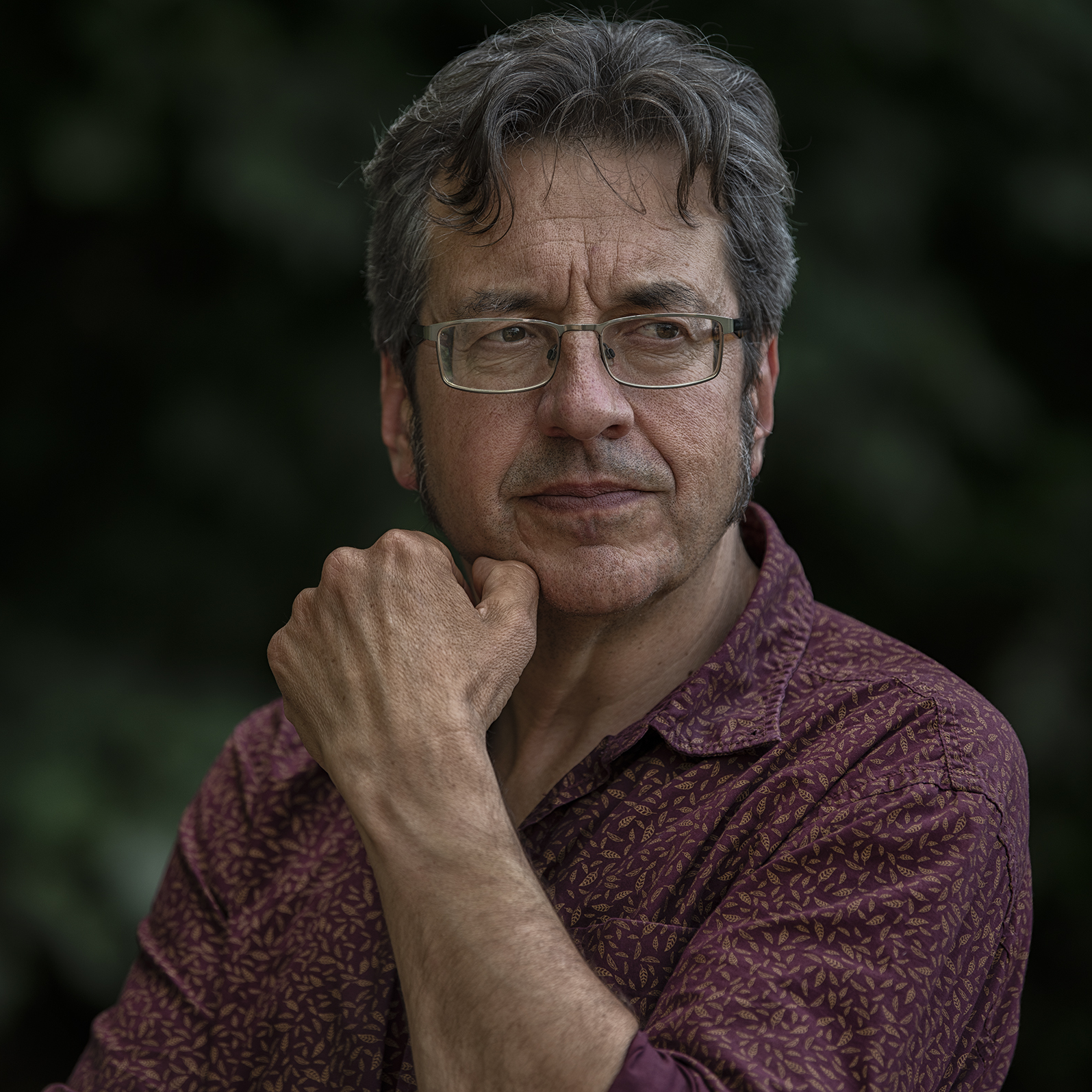
George Monbiot
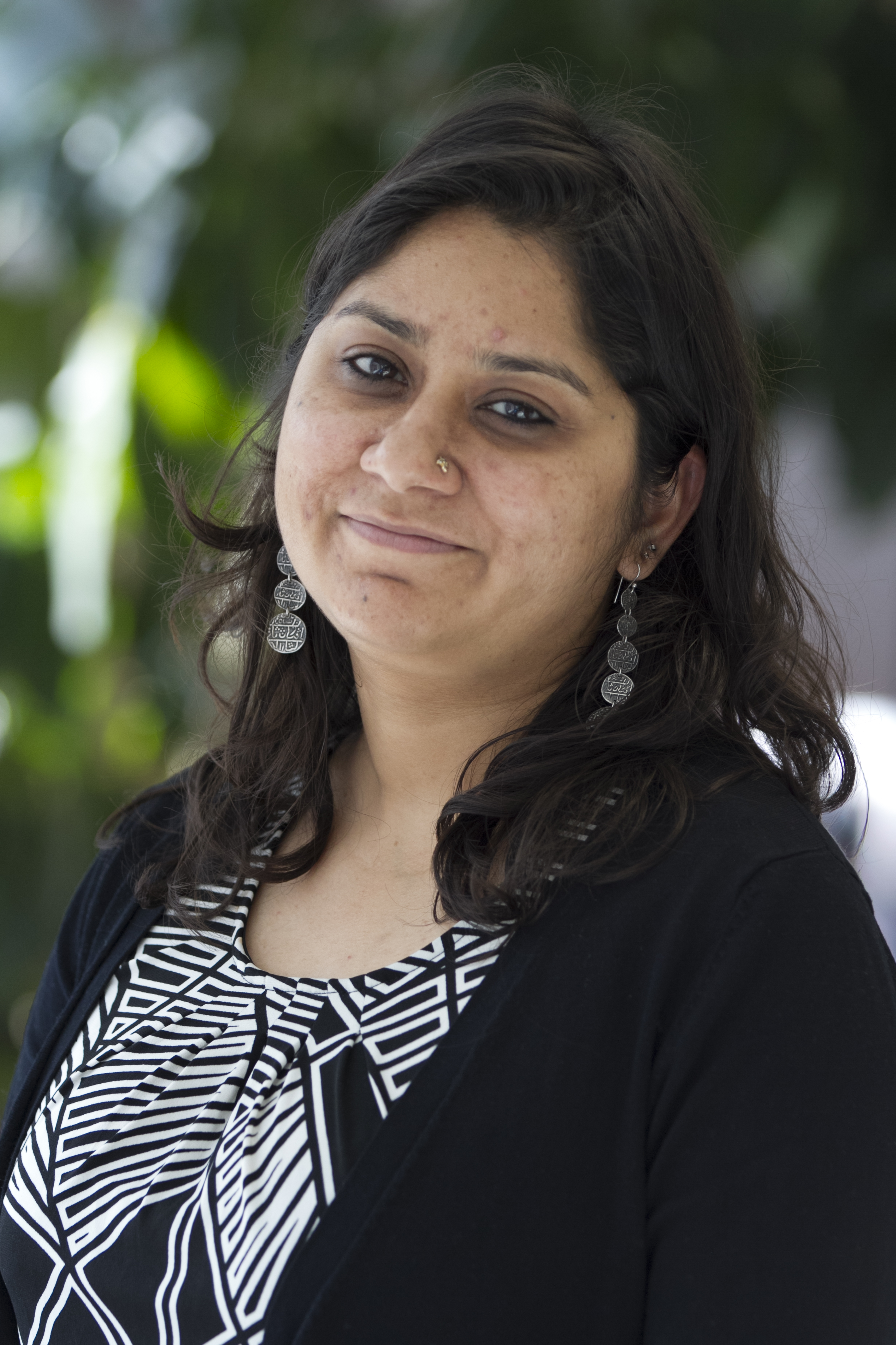
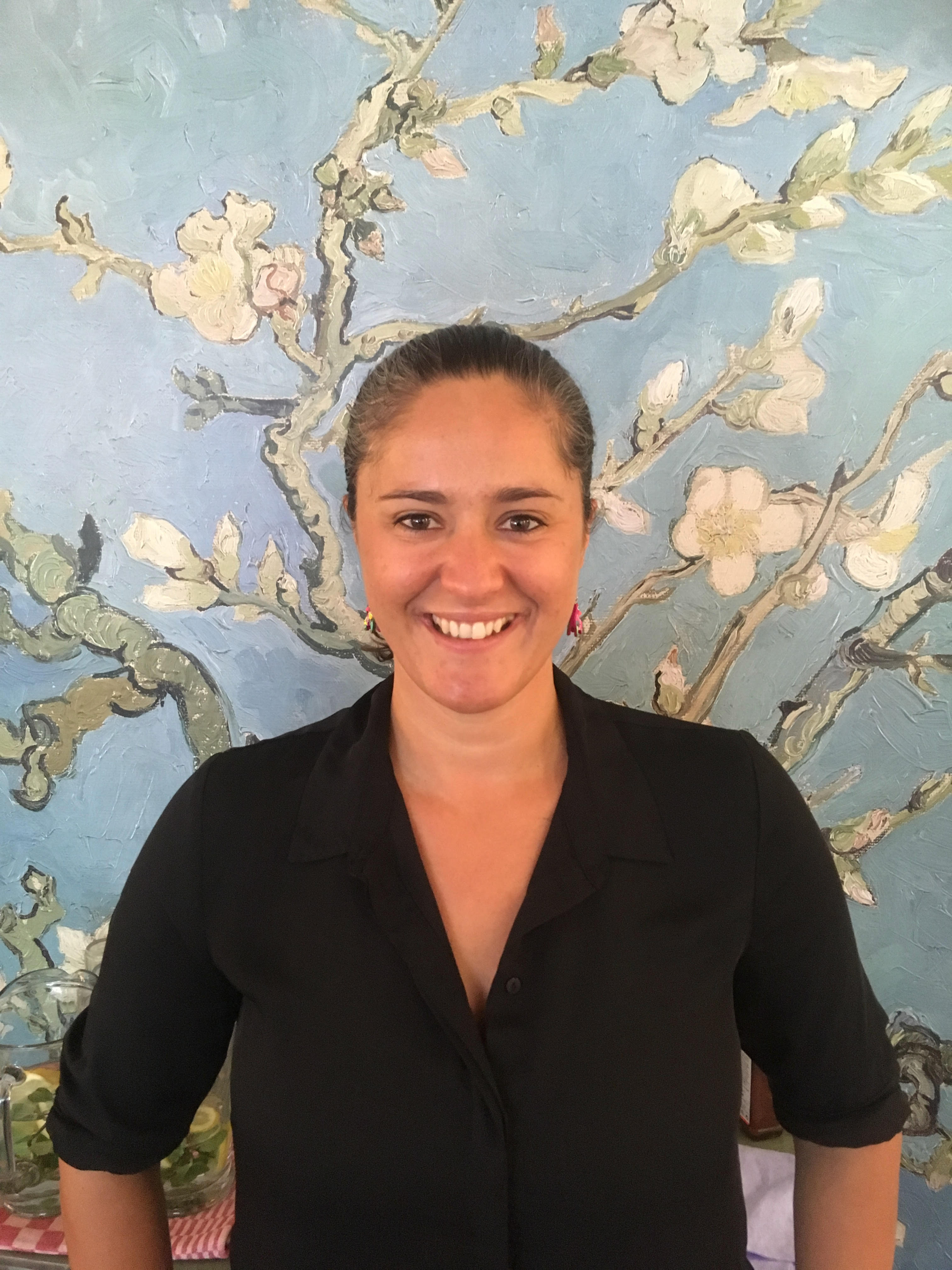
Dr. Laura Pereira
.jpg)

